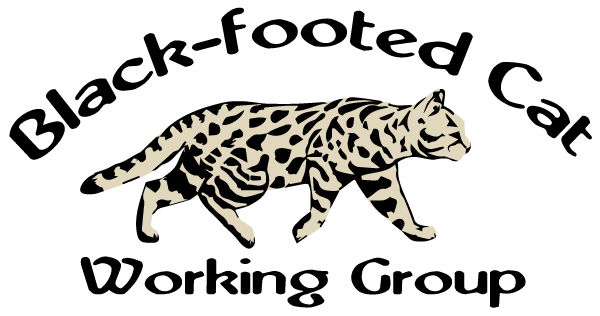Black-footed Cat Facts
- The black-footed cat (Felis nigripes) is Africa’s smallest wild cat species. It weighs only about one-third of the average housecat.
- It is found only in southern Africa in Namibia, Botswana, and South Africa and prefers dry, short-grass habitat.
- This tiny nocturnal predator is often referred to as “the world’s deadliest cat” because of its incredibly high hunting success rate.
- The black-footed cat is possibly the rarest cat in Africa with an estimated population of less than 10,000 mature individuals. It is classified as Vulnerable by the IUCN.
Learn more about the amazing black-footed cat and how you can help protect it.
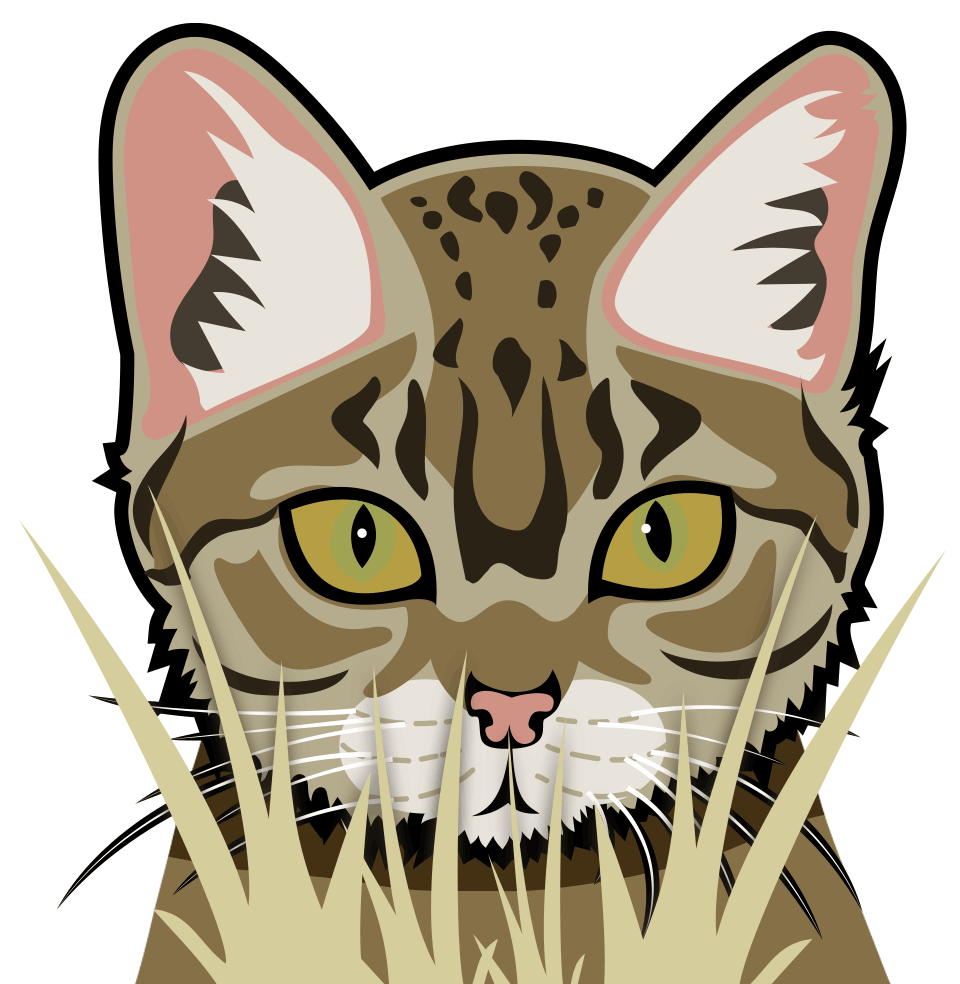
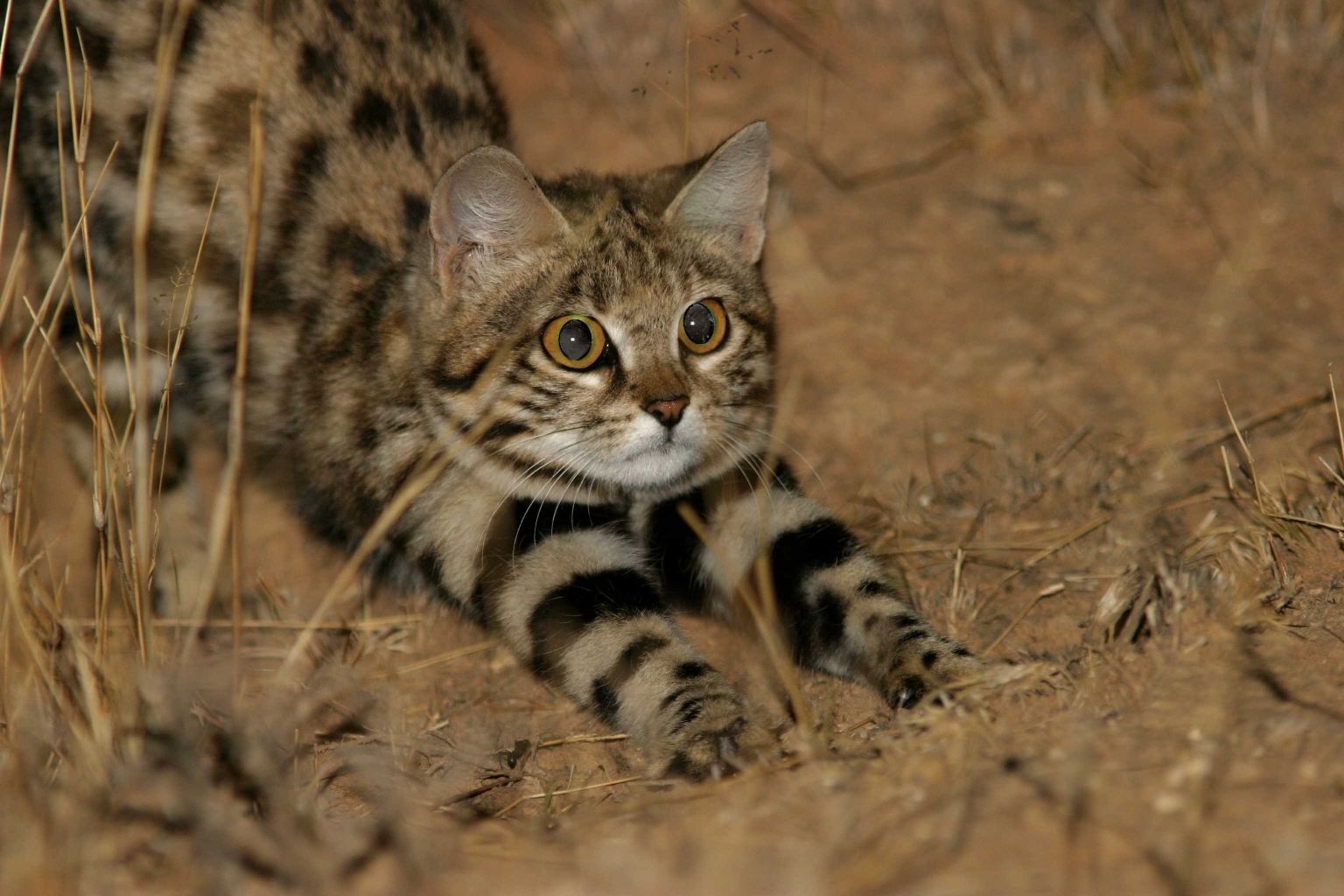
Black-footed Cat SIZE
The black-footed cat is the smallest African cat and is considered the third smallest wild cat species in the world. A fully grown male weighs 1.9 kg on average (4.2 lbs) but not more than 2.5 kg. Females weigh 1-1.5 kg (2.2-3.3 lbs). They reach a body length of only 50-63 cm (20-25″) and a shoulder height of 17-25 cm (6.7-10″).
Why is it called a Black-footed Cat?
The black-footed cat is named for the black fur on the soles of its feet. Both front and back feet have black fur on the bottom side running from the toes back to the “heel”.
Its sleek, tawny fur is marked with bold, black spots and black rings around the legs, which give this diminutive hunter a perfect camouflage, especially on moonlit nights.
Their stocky body and short tail show that they are not particularly adept climbers, but perfectly adapted to hunting low down in the short vegetation.
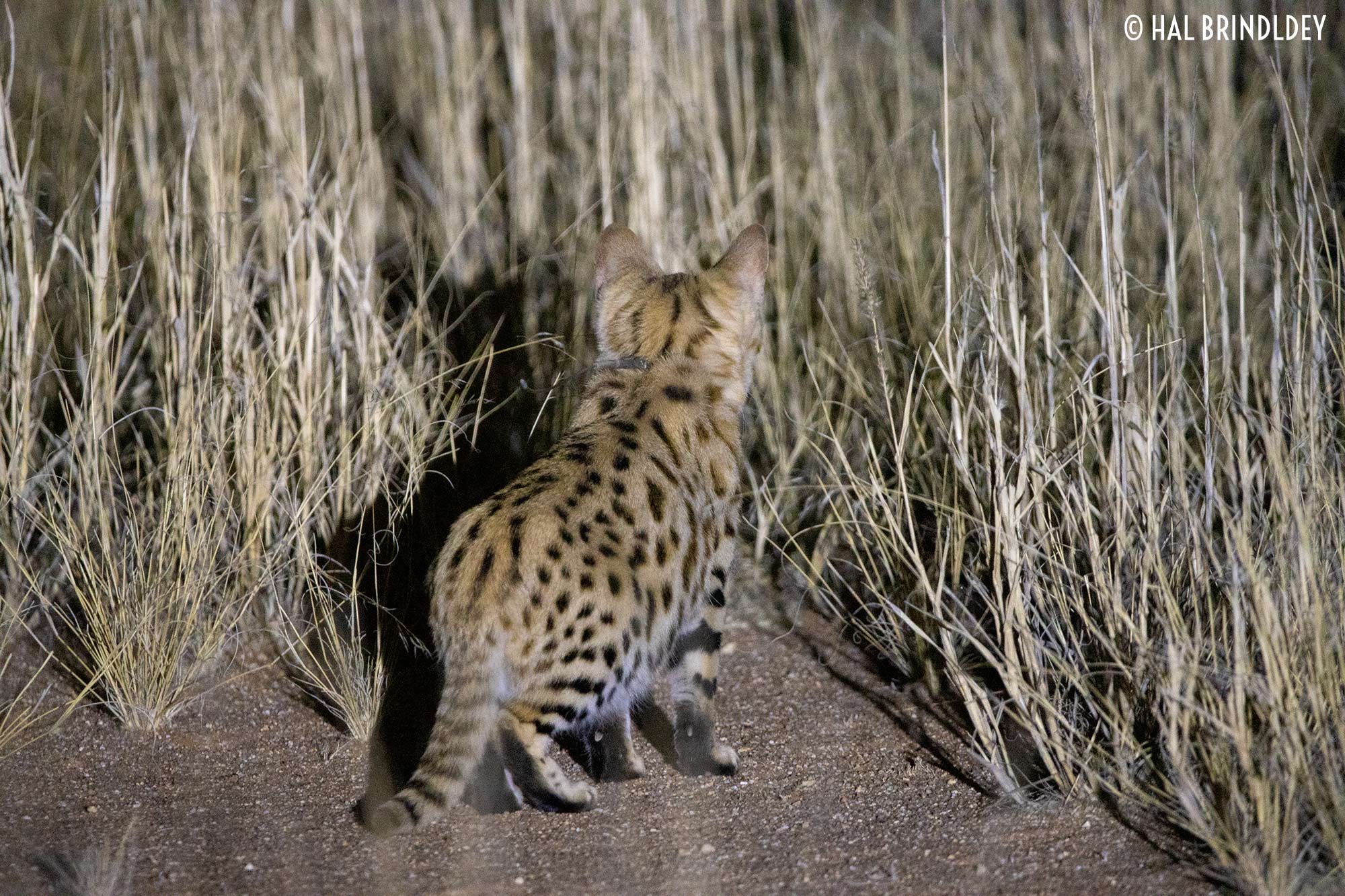
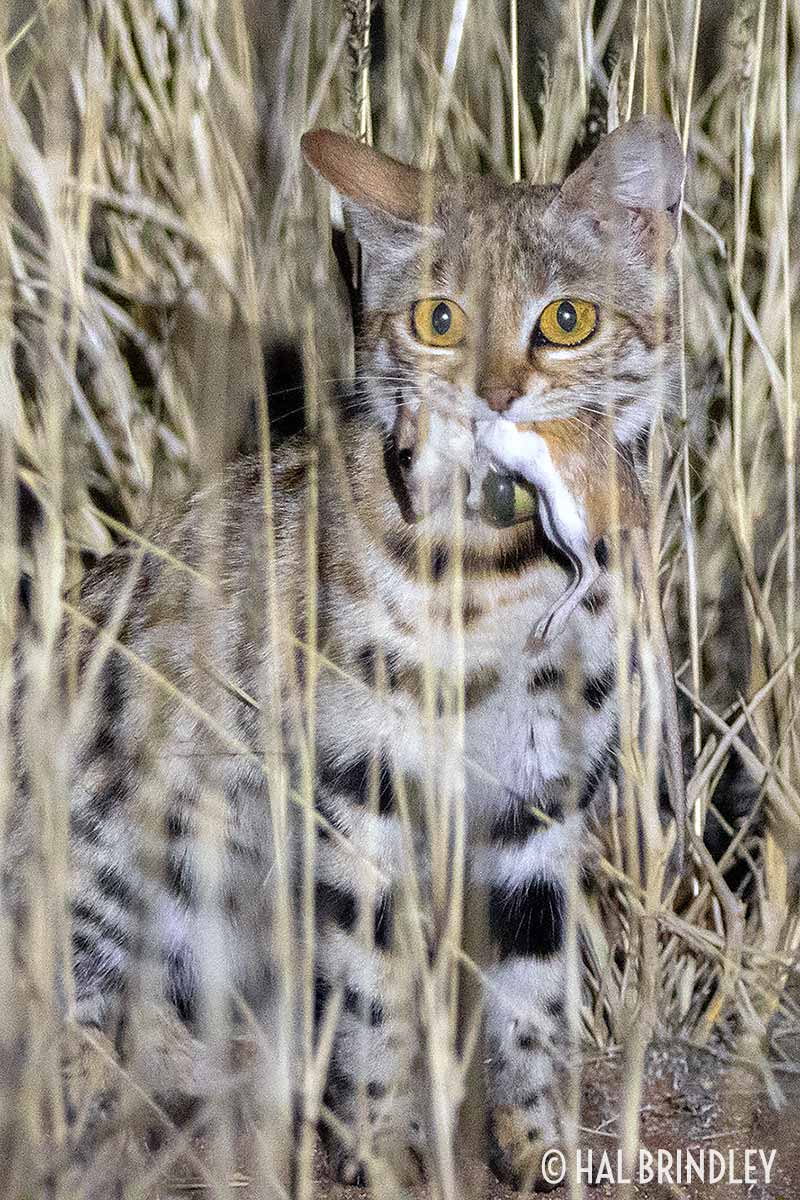
What do Black-footed cats eat?
Black-footed Cats are opportunistic hunters, feeding on 40 different vertebrate species. Their varied diet is comprised of rodents and shrews (55%), small birds (20%), large, soft-bodied insects, spiders, scorpions, small snakes and geckos.
They are capable of killing prey larger than themselves, can catch birds in flight, and jump up to 2 m distance and 1.4 m high.
The Black-footed Cat’s appetite is extraordinary. They are very successful hunters catching on average one vertebrate prey animal every 50 minutes. During the course of one night they eat prey amounting to one fifth of their own body mass. If their catch is too large to finish in one go, they hide it in their dens or even in aardvark digs and return hours later to continue feeding.
Habitat
Black-footed Cats inhabit the arid steppes and grassland savannas of the Kalahari, the Karoo deserts and parts of the South African Highveld, often in association with termite mounds.
Male Black-footed Cats use a home range of up to 25 km² in one year and share the area with up to three females, who have smaller ranges of 10 km². Every night they cover a distance of 5 to 16 km, often hunting in small circles and zig-zagging between bushes and termite mounds. They spend the day in burrows or hollowed out termite mounds
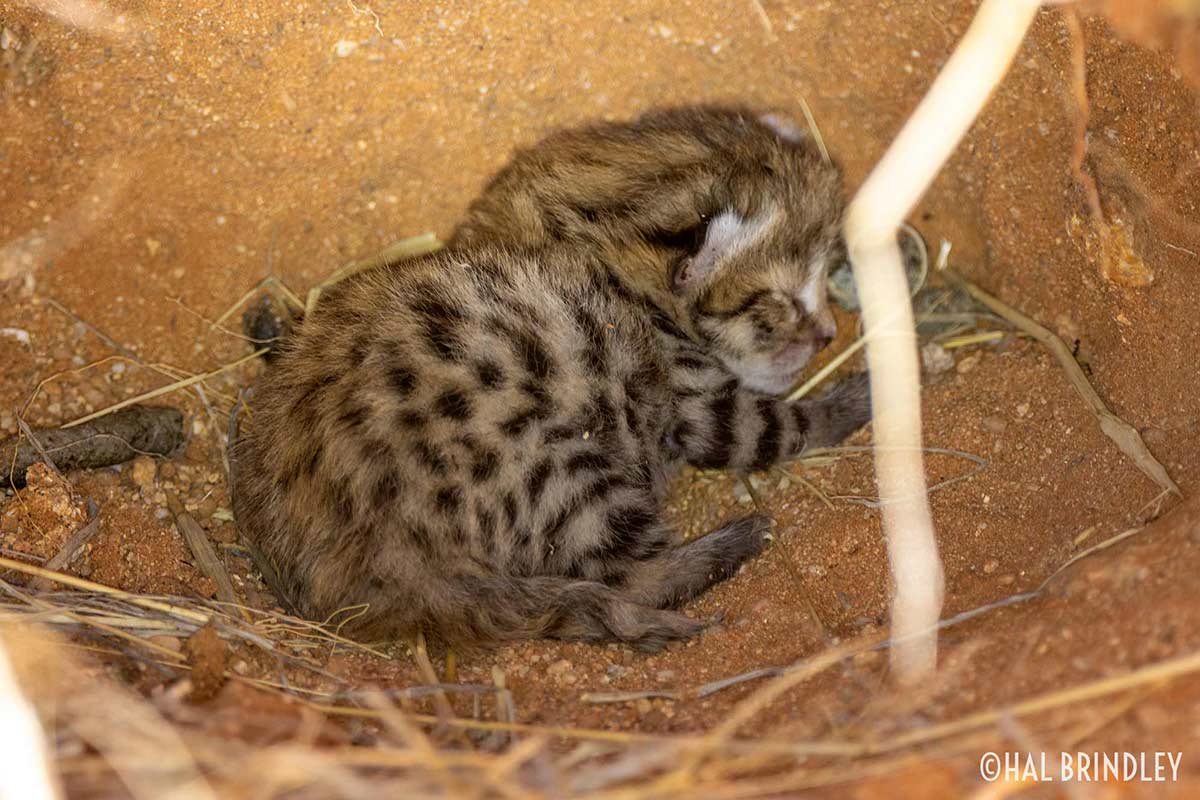
Black-footed cat kitten approximately one-week old.
Reproduction
In a year, a female usually raises two litters of two kittens. Her kittens are born during the southern hemisphere summer (October – March) after a gestation period of 63 – 68 days, hidden in hollow termite mounds or empty springhare burrows. They are weaned within two months.
Their call is surprisingly loud and deep – a throaty ‘rraaouuh’ uttered repeatedly during the breeding period. Female make a soft call to kittens.
Status in the wild
This secretive and retiring cat is the rarest of the African felids. In the IUCN Red List it is listed as Vulnerable. In the larger part of their range they are protected, but hunting them is prohibited only in Botswana and South Africa.
The total effective population size is less than 10,000 mature breeding individuals. Due to loss of its prey base through habitat degradation by overgrazing, indirect persecution by poisoning, and predator control, the population is declining.
